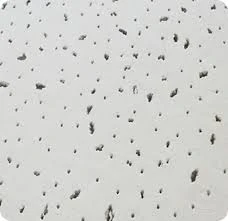- Afrikaans
- Albanian
- Amharic
- Arabic
- Armenian
- Azerbaijani
- Basque
- Belarusian
- Bengali
- Bosnian
- Bulgarian
- Catalan
- Cebuano
- Corsican
- Croatian
- Czech
- Danish
- Dutch
- English
- Esperanto
- Estonian
- French
- German
- Greek
- Hindi
- Indonesian
- irish
- Italian
- Japanese
- Korean
- Lao
- Malay
- Myanmar
- Norwegian
- Norwegian
- Polish
- Portuguese
- Romanian
- Russian
- Serbian
- Spanish
- Swedish
- Thai
- Turkish
- Ukrainian
- Uzbek
- Vietnamese
ທ.ວ. . 01, 2024 15:40 Back to list
mineral fiber suspended ceiling
The Benefits and Applications of Mineral Fiber Suspended Ceilings
In the realm of modern architecture and construction, the choice of ceiling materials plays a pivotal role in shaping the aesthetics, acoustics, and overall functionality of a space. Among the various options available, mineral fiber suspended ceilings have emerged as a popular choice, particularly in commercial and industrial settings. This article will explore the characteristics, benefits, applications, and installation considerations of mineral fiber suspended ceilings.
What is a Mineral Fiber Suspended Ceiling?
Mineral fiber suspended ceilings are composed of natural or synthetic mineral fibers, often combined with additives to enhance their properties. These tiles are lightweight, typically installed within a grid system suspended from the structural ceiling above. The composition of these tiles can vary, but they generally include a mix of materials such as gypsum, fiberglass, or organic fibers, providing a unique combination of strength, durability, and sound absorption.
Key Benefits
1. Acoustic Performance One of the standout features of mineral fiber suspended ceilings is their excellent sound-absorbing qualities. The porous nature of mineral fibers allows them to dampen sound waves, making them ideal for environments such as offices, schools, and auditoriums where noise control is crucial. By reducing echo and ambient noise, these ceilings contribute to a more comfortable and productive atmosphere.
2. Fire Resistance Safety is a paramount concern in any building, and mineral fiber ceilings offer a significant advantage in this regard. Most mineral fiber tiles are treated with fire-resistant chemicals, enabling them to withstand high temperatures and slow the spread of flames. This property helps meet safety regulations and enhances the overall fire safety of a structure.
3. Aesthetic Versatility Available in a variety of designs, textures, and colors, mineral fiber suspended ceilings can cater to diverse architectural styles. Whether you're aiming for a sleek, modern look or a more traditional aesthetic, there are countless options to choose from. Additionally, the ceilings can be painted or customized to fit specific design visions, offering endless possibilities for interior decoration.
4. Easy Installation and Maintenance One of the practical advantages of mineral fiber ceilings is their ease of installation. The suspended grid system allows quick setup, and access to plumbing and electrical systems above the ceiling is simplified. Maintenance is also straightforward; tiles can easily be replaced if damaged, and many products are washable, making them low-maintenance options for high-traffic areas.
mineral fiber suspended ceiling

5. Eco-Friendly Options With growing concerns about sustainability, many manufacturers now produce mineral fiber ceilings from recycled materials or those sourced sustainably. This aligns with the increasing demand for environmentally responsible building materials, allowing businesses and individuals to reduce their carbon footprint.
Applications
Mineral fiber suspended ceilings are versatile and can be utilized in a variety of settings
- Corporate Offices They are widely used in commercial office buildings to improve acoustics and create comfortable workspaces. - Educational Institutions Schools often implement these ceilings to enhance sound quality in classrooms and reduce distractions. - Healthcare Facilities Hospitals and clinics benefit from their noise reduction characteristics, contributing to a more healing environment for patients. - Retail Spaces Retail environments frequently employ mineral fiber ceilings to create visually appealing interiors while managing acoustics effectively.
Installation Considerations
While mineral fiber suspended ceilings offer numerous advantages, there are important considerations to keep in mind during installation. It is crucial to ensure that the underlying structure can support the weight of the grid and tiles. Additionally, attention should be given to proper alignment and leveling to maintain a visually pleasing appearance.
Furthermore, when selecting mineral fiber products, it's essential to consider factors such as humidity tolerance and maintenance requirements, especially in areas like kitchens or bathrooms where moisture levels may be higher.
Conclusion
In summary, mineral fiber suspended ceilings offer a compelling combination of acoustic performance, fire resistance, aesthetic versatility, and ease of installation. With widespread applications in commercial, educational, and healthcare settings, they have become a staple in modern construction. As the demand for sustainable building materials grows, mineral fiber ceilings are well-positioned to meet the needs of architects, builders, and occupants alike, contributing positively to the environments in which they are installed.
-
Transform Interiors with PVC Gypsum Ceiling: A Stylish, Durable, and Moisture-Resistant SolutionNewsMay.19,2025
-
The Smart Interior Upgrade: Discover the Durability and Versatility of Gypsum Ceiling Access Panel SolutionsNewsMay.19,2025
-
The Smart Choice for Interior Design: Discover the Value of PVC Gypsum Ceiling SolutionsNewsMay.19,2025
-
Mineral Fiber Ceiling Tiles: The Smart Blend of Performance and AestheticsNewsMay.19,2025
-
Mineral Fiber Ceiling Tiles: The Superior Choice Over Gypsum for Sound and Fire SafetyNewsMay.19,2025
-
Mineral Fiber Ceiling Tiles: Eco-Friendly Strength and Style for Every CeilingNewsMay.19,2025







